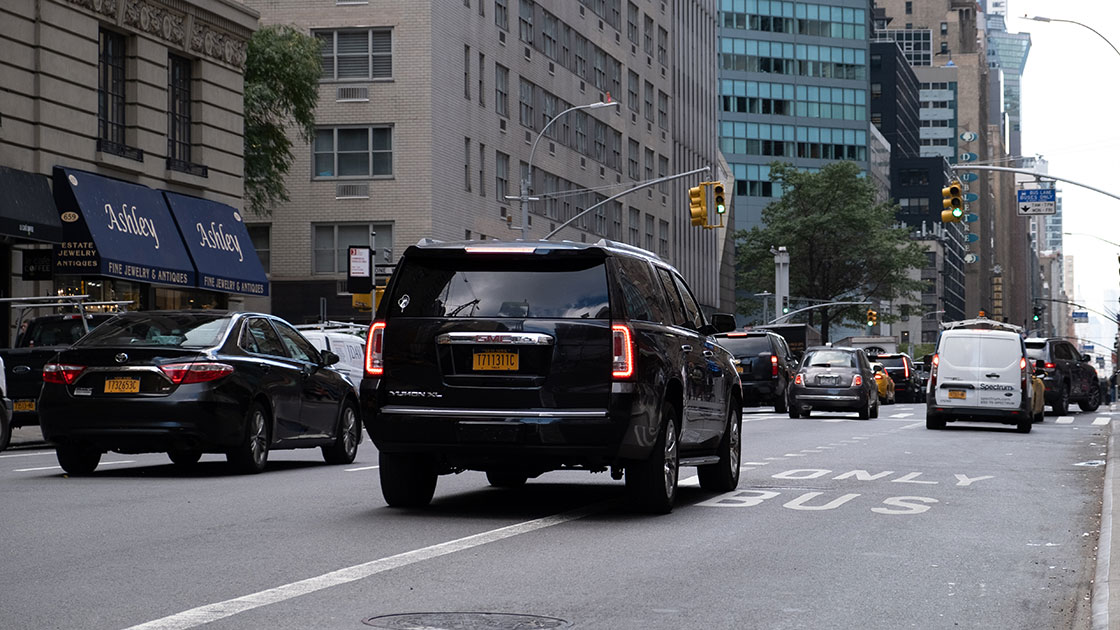Autobrake is good, but it could be better
February 21, 2019

When it comes to preventing typical front-to-rear crashes, automatic emergency braking is a proven winner. Extending its functionality to address less-common types of rear-end crashes involving turning, changing lanes or striking heavy trucks or motorcycles, for instance, would help maximize autobrake's benefits, a new IIHS study indicates.
Current autobrake systems are designed to address potential crash scenarios involving two passenger vehicles traveling in a line on a dry road at low speeds. The Institute's front crash prevention ratings program, which IIHS launched in 2013, assesses autobrake system performance in this kind of situation in which one vehicle is in danger of rear-ending another. Sixty-six percent of the autobrake systems IIHS has evaluated on 2019 models earn the highest rating of superior for front crash prevention, and nearly 8 percent earn an advanced rating.
Autobrake reduces the frequency of property damage liability claims by 13 percent, rates of rear-end crashes by 50 percent and rear-end crashes involving injuries by 56 percent, studies conducted by IIHS and HLDI have found. Property damage liability coverage pays for damage that an at-fault driver causes to another vehicle.
Although the reductions are impressive, there is more room for progress. IIHS estimates that autobrake could potentially prevent as many as 70 percent of front-to-rear crashes involving passenger vehicles as striking vehicles and 20 percent of all passenger vehicle crashes reported to police.
To see what types of rear-end crashes in which vehicles with autobrake are involved, IIHS researchers examined police crash-report data from 23 U.S. states during 2009–2016 for striking passenger vehicles with and without autobrake among models on which the system was optional. They controlled for driver demographics and vehicle features and used logistic regression to examine the odds that rear-end crashes with various characteristics involved a striking vehicle with autobrake. Autobrake was considered to be less effective at preventing the types of rear-end crashes that were overrepresented among vehicles with the feature and more effective at preventing crash types that were underrepresented.
"Our goal was to identify additional opportunities to increase the effectiveness of autobrake," says Jessica Cicchino, IIHS vice president for research and a study co-author. "The findings will help guide future modifications to our front crash prevention tests to take into account some of these other crash scenarios."
More than two-thirds of the crashes during the study period occurred when the road surface was dry, the striking vehicle was moving straight, or the struck vehicle was slowing or stopped. More than half of crashes occurred at speed limits of 45 mph or below, and about half of the vehicles struck were cars. These are the typical scenarios that current autobrake systems address.
The remainder of the crashes studied involved less-typical situations. Crash-involved vehicles with autobrake were more likely to be turning, to strike a vehicle that was turning or changing lanes, to strike a nonpassenger vehicle or special-use vehicle (medium or heavy trucks or motorcycles, for example), crash on a snowy or icy road, or on a road with a 70 mph or higher speed limit than control-group vehicles. Researchers examined speed limit as a proxy for vehicle speed.
"No crash avoidance technology is designed to address every possible crash scenario," Cicchino says. "Designers have rightly focused on the most common kinds of crashes. As automatic emergency braking matures, manufacturers are expanding functionality to account for collisions involving pedestrians and bicyclists, for example.
"At the same time, designers have to be mindful not to build in sensitivities that would irk drivers or put them in potentially risky situations by intervening in situations in which the driver is in control of the vehicle," she adds.
There is a clear need for autobrake systems that reliably detect other motor vehicles. IIHS research indicates that autobrake could potentially prevent up to 13 percent of passenger vehicle crashes with motorcycles (see "Helping vehicles 'see' motorcyclists could cut crashes," Oct. 19, 2017).
Autobrake systems that reliably detect large trucks could prevent underride crashes. Twelve percent of U.S. passenger vehicle occupant deaths in 2017 were in crashes with large trucks, and 1 in 5 of these deaths occurred when a passenger vehicle struck the rear of a large truck.
Vehicles with autobrake are overrepresented in some types of rear-end crashes
Proportion of rear-end crashes with various characteristics by type of striking vehicle